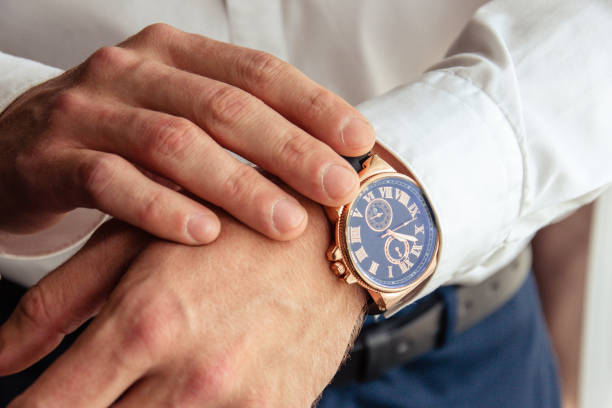Color and contrast: styling wrist accents to complement skin tone and outfits
Discover practical guidance on using color, contrast, and materials to style bracelets that flatter your skin tone and suit various outfits. This teaser highlights considerations like metals, textiles, sizing, layering, personalization, and care so you can make informed choices while exploring sustainable and repair-friendly options.

Choosing wrist accents is about intentional contrast, material choices, and practical fit rather than simply matching a piece to an outfit. Consider how a bracelet’s color and finish will read against your skin and the rest of your look, and factor in materials, clasps, and comfort to ensure the piece wears well throughout the day. This article breaks down color theory for wristwear, how different metals, textiles, and composites perform, sizing and clasp tips, layering strategies, personalization options like engraving and wearabletech, and sustainability and repair considerations.
How does color influence wristwear choices?
Color shapes the way jewelry reads—either as a focal point or a subtle complement. Warm skin undertones often harmonize with golds, warm-hued textiles, and earthy composites, while cool undertones can be brightened by silver, white metals, and jewel-toned straps. Neutral undertones can mix both palettes. Contrast affects scale perception: dark, saturated bands create strong focal points on lighter skin, and lighter or metallic pieces pop on deeper tones. Think seasonally too: textiles and enamel allow quick color shifts without committing to new metalwork, letting you adapt color choices to outfits and trends.
Which metals, textiles, and composites work best?
Metals, textiles, and composites each bring distinct visual and tactile qualities to wristwear. Metals—yellow gold, rose gold, sterling silver, titanium—offer reflective finishes that interact with ambient light; choose warmth or coolness according to skin undertone. Textiles such as leather, woven cords, and ribbon provide matte, organic texture and are easily dyed to coordinate with outfits. Composites like resin, enamel, and ceramic deliver saturated color and modern finishes that resist tarnish. Mixing a polished metal with a matte textile or a colored composite creates dimensional contrast that reads as intentional styling rather than clutter.
How do clasp and sizing affect comfort and appearance?
A bracelet’s clasp and sizing affect not just security but also silhouette on the wrist. Quick-release and lobster clasps provide strong hold for fine metal chains; toggle or magnetic clasps suit chunkier cuffs or ease of wear. Adjustable sliding knots work well for textile bands and allow on-the-go resizing. Proper sizing accounts for wrist circumference plus intended movement: a snug fit should still permit slight movement without compressing the skin; a draped fit needs extra length to avoid rotating under sleeves. Look for clasps that offer micro-adjustments or combine extenders with adjustable closures for versatile wear.
How should I approach layering and mixing jewelry?
Layering creates a curated stack that balances scale, texture, and color. Start with a dominant element—a cuff, bold chain, or standout composite piece—then add slimmer chains, braided textiles, or subtle charms to complement it. Alternate reflective metals with matte textiles to avoid visual monotony, and vary widths so each piece retains its identity. Coordinate scale with clothing: delicate stacks suit short sleeves and higher necklines; larger cuffs pair well with long sleeves and simpler necklines. Maintain cohesion by repeating a motif, color, or metal finish across the stack.
What personalization options enhance meaning and function?
Engraving, charms, and modular elements let wristwear tell a personal story. Engraving initials, dates, or short messages adds low-profile sentiment without overpowering a design. Interchangeable straps and bezels allow one wearabletech core or locket to adapt across metals, textiles, and composites, blending function with style. Personalization also includes practical touches—custom sizing, hypoallergenic metals, or discreet clasps for those with limited dexterity. Select designs that permit future swaps or refits so personalization can evolve as tastes and needs change.
How do sustainability, upcycling, and repair fit into wristwear decisions?
Choosing sustainable materials—recycled metals, responsibly sourced leather alternatives, and durable composites—reduces environmental impact and often improves longevity. Upcycling older chains or turning broken necklaces into bracelets offers unique, meaningful pieces while diverting waste. Regular maintenance and local services for cleaning, soldering, re-plating, or restringing can extend a piece’s life; search for local services in your area that specialize in jewelry repair and conservation. Simple home care—storing bracelets separately, avoiding harsh chemicals, and checking clasps—prevents damage and keeps pieces wearable longer.
In summary, styling wrist accents relies on a mix of color theory, material choice, and practical fit. Consider how metals, textiles, and composites contrast with your skin tone, choose appropriate clasps and sizing for comfort, and use layering and personalization to refine your aesthetic. Prioritizing sustainability, upcycling, and accessible repair options keeps wristwear both meaningful and enduring, helping you build a thoughtful, versatile collection of pieces that complement outfits and everyday life.




